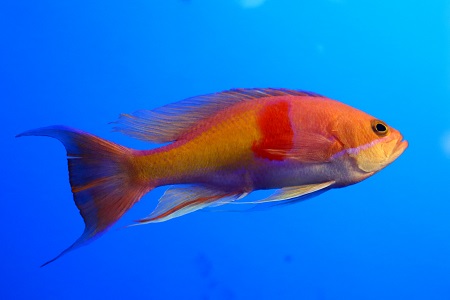I visited Toba Aquarium to see biological impacts of Fukushima No.1 nuclear power plant accident. Though I have visited various places in Japan to see the health consequences of the accident, I have never found any effect against creatures in Japan.
Toba Aquarium is located in Mie prefecture. It is one of the world maximum grade scale aquariums. It opened in 1955. Toba Aquarium celebrates its 60th anniversary in 2015. 20000 examples of sea life including 850 different species are currently exhibited in a wide range of habitats. Appointed by the Ministry of Education, Culture, Sports, Science and Technology, the aquarium is popular as a social education institution.
The building is divided up between 12 zones by a species and habitat which can be explored at leisure. The mermaid sea zone is the only one in Japan, where you can see a real dugong. Sea lion performances are held in the performance stadium, and in addition, a variety of experience zones are offered, including sea beast kingdom, coral reef diving, the sea around Ise Shima, the sea around Japan, etc.
Generally speaking, marine creature's growth is so fast than human beings that they are more sensitive to radioactive materials of the environment than us. So I visited Toba Aquarium to see effects of the accident against creatures which are grown up by Japanese food and water. Fortunately, I can see them grown up safely and I cannot find any impact of the accident. It seems that there is no problem for childbirth and child-rearing in Mie prefecture, Japan.
Posted by Yoshitaka Kiriake from Japan on January 27, 2015.
鳥羽水族館は飼育種類数が日本一を誇り、ジュゴンとマナティに会える日本で唯一の水族館です。色彩変異のアメリカザリガニも見ることが出来ました。2014年12月撮影
Dugong
ジュゴン
アフリカマナティー
West African Manatee
Toba Aquarium
鳥羽水族館
About Toba Aquarium
English
Japanese
Google map
South American Sea Lion
Otaria flavescens
オタリア
Humboldt Penguin
Spheniscus humboldti
2014年に生まれたフンボルトペンギンの子供
This Humboldt Penguin is born here on January 2014.
Clione limacina limacina
ハダカカメガイ(クリオネ)
Marron (color variation)
Cherax cainii
マロン (ブルー個体)
Horseshoe Crab
Limulus polyphemus
アメリカカブトガニ
Chambered Nautilus
Nautilus pompilius
オウムガイ
New Caledonia Nautilus
Nautilus macromphalus
オオベソオウムガイ
Red swamp crawfish (color variation)
Procambarus clarkii
アメリカザリガニ (色彩変異)
Red swamp crawfish (normal color)
通常のアメリカザリガニ
Japanese tree frog (color variation)
ニホンアマガエル (色彩変異)
Japanese tree frog (normal color)
通常のニホンアマガエル
American Beaver
Castor canadensis
アメリカンビーバー
Commerson's Dolphin
Cephalorhynchus commersonii
イロワケイルカ
Grey Seal
Halichoerus grypus
ハイイロアザラシ
Finless Porpoise
Neophocaena phocaenoides
スナメリ
Seaweed pipefish
Syngnathus schlegeli
ヨウジウオ
Heptacarpus geniculatus
コシマガリモエビ
Red-belted Anthias
Pseudanthias rubrizonatus
アカオビハナダイ
Dark-banded Fusulier
Pterocaecio tile
クマザサハナムロ
Threadfin Cardinalfish
Apogon leptacanthus
イトヒキテンジクダイ
Goldtail Demoiselle
Chrysiptera parasema
シリキルリスズメダイ
Mandarin Dogfish
Cirrhigaleus barbifer
ヒゲツノザメ
Bichir
Polypterus endlicheri endlicheri
ポリプテルス・エンドリケリー
Bester
Huso huso x Acipenser ruthenus
ベステル
Asian Arowana
Scleropages formosus
アジア・アロワナ
Medaka fish
Oryzias latipes
ミナミメダカ
Dwarf topmouth minnow
Pseudorasbora pumila subsp.
ウシモツゴ
Dwarf Rill Trout
Oncorhynchus masou ishikawae
アマゴ
Dark Chub
Candidia temminckii
カワムツ
Blackstripe Shiner
Pungtungia herzi
ムギツク
Japanese Eight-Barbel Roach
Lefua echigonia
ホトケドジョウ
Flat bitterling
Acheilognathus rhombeus
カネヒラ
Sand loach
Cobitis biwae
シマドジョウ
Trident Goby
Tridentiger brevispinis
ヌマチチブ
Japanese Fire-Bellied Newt
Cynops pyrrhogaster
アカハライモリ

Japanese foods are good and safe.
Because of stricter food safety law by Japanese government, we have no worry about foods.
Tekonezushi ; sliced raw fish over the bed of vinegared rice
手こね寿司
Tekonezushi ; sliced raw fish over the bed of vinegared rice
手こね寿司
Ise Udon
伊勢うどん
Akafuku ; bean paste on the ricecake (Left)
Hojicha ; roasted green tea (Middle)
Oshiruko ; sweet red-bean soup with mochi (Right)
赤福、ほうじ茶、お汁粉
About 4 years have passed since Fukushima Daiichi nuclear power plant accident. I have visited various places of Japan to see the health consequence of the accident.
Fortunately I have never found any impacts by the accident among Japanese creatures. As far as I know, nobody has health problem which is caused by the accident in Japan.
Our Prime Minister Abe assures that "The situation is under control. The influence of the contaminated water is completely blocked within Fukushima. There are no health-related problems until now and there will never be health problems." He also said that "Tokyo is 250 kilometers away from Fukushima, and the kind of danger that you imagine does not exist in Tokyo. Tokyo is a very safe city."
As PM Abe said, Mie prefecture is very far away from Fukushima, people in Mie have no concern about the nuclear power plant accident. People in Mie prefecture have already forgotten the accident, because they think radioactive materials cannot reach there.
We know there is no problem for child birth and child rearing in Mie. So people in Mie are living without any concern about the accident.
I continue to visit various places in Japan to see the effects of the accident, because I can meet various creatures which are more sensitive to radioactive materials from the environment. It is important to see their health for our safety.
公衆衛生ネットワーク
Public Health Network in Japan

















































































